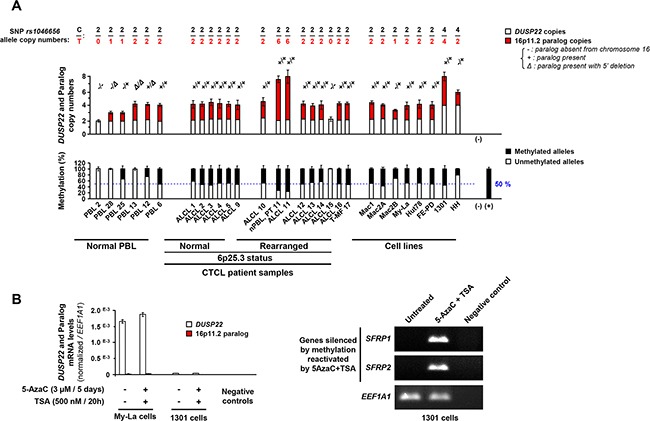Figure 3. Copy number and methylation status of DUSP22 and its 16p11.2 paralog in anaplastic large T-cell lymphomas.

A. Top panel: DUSP22 and paralog copy numbers, determined by quantitative analysis of SNP rs1046656 (allele C= DUSP22; allele T= paralog), in normal lymphocytes (PBL) and cutaneous T-cell lymphomas cases (CTCL) and lymphoid T-cell lines. KLK3 (19q13.41) was used as a control gene for normalization. The occurrence of deletion in the 5′ region of the paralog was evidenced by the observation of altered qPCR signal ratios between exon 1 and exon 6. PBL cases with different 16p11.2 paralog status (2: no copy; 28: one copy with 5′ deletion; 25: one copy; 13: two copies with 5′ deletion; 12: two copies, one having 5′ deletion; 6: two copies) were used as controls. For ALCL case 10, found to carry 6 copies of the 16p11.2 paralog, analysis of the patient's normal PBL (Normal, PT 10) showed that this was a constitutional feature. A. Bottom panel: Quantitative methylation specific PCR (MSP) analysis of 5′ CpG island present in DUSP22 and most 16p11.2 paralog alleles, in normal PBL and CTCL samples and cell lines. No DNA (-) and in vitro methylated DNA (+) were used as negative and positive controls. Percentages of unmethylated and methylated alleles (Mean ± SEM from independent measurements) are shown. For ALCL case 10, found to constitutionally carry 6 copies of the 16p11.2 paralog (Top panel), comparative analysis with the patient's normal PBL (Normal, PT 10) showed that the high level of methylation observed in that tumor is attributed to the paralog copies. B. Left panel: DUSP22 and paralog transcript levels were analyzed by allele specific (SNP rs1046656: C = DUSP22; T = paralog) quantitative RT-PCR, normalized by EEF1A1 expression, in lymphoid T-cell lines treated or not with 5-Aza-2′-deoxycytidine (DNA methyltransferase inhibitor) trichostatin A (histone deacetylase inhibitor). Mean ± SEM from independent measurements are shown. Such treatment did not significantly alter DUSP22 expression and notably did not upregulated expression in the 1301 cell line with low levels. Right panel: as a control of drug efficiency, SFRP1 and SFRP2 genes, known to be silenced by promoter methylation in various cancers, were reactivated by combined treatment with 5-Aza-2′-deoxycytidine and trichostatin A.
